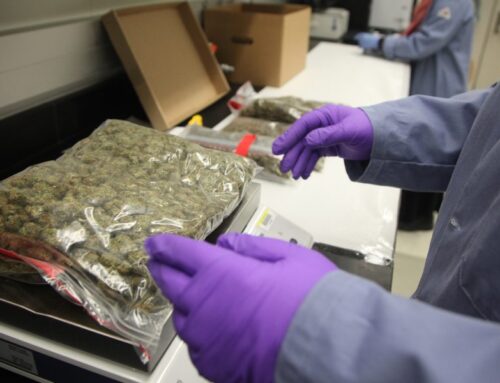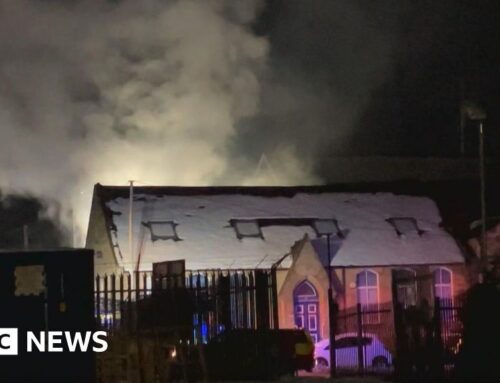Why Amazon and Starbucks are striking now, and what it means for labor under Trump
December 23, 2024
In summary
Striking Amazon and Starbucks workers in California and elsewhere have long pushed for union contracts. The Trump administration is unlikely to be on their side.
Striking Amazon and Starbucks workers are on picket lines instead of delivering last-minute presents or handing customers Christmas-themed drinks, as their unions pressure the companies during the holidays — and before a less union-friendly president is sworn into office.
The workers accuse their employers of refusing to recognize their unions or to bargain in good faith. They have been organizing for more than four years but have yet to land a contract. Some have filed complaints with the National Labor Relations Board, alleging union-busting behavior by the companies, including coercion, threats, discipline and firings. Amazon and Starbucks have also filed complaints against the unions, accusing them of coercion, violence and illegal strikes.
Soon, the board will likely be less sympathetic to unions after the Senate earlier this month failed to extend the term of then-Chairperson Lauren McFerran. The five-member board had three Democratic members including McFerran. President-elect Donald Trump will have the chance to appoint two more Republicans.
“The Trump NLRB the first time around was the most right-wing, anti-labor NLRB in the entire nearly 90-year history of the board,” said William Gould, a former chairperson of the National Labor Relations Board during President Bill Clinton’s administration and a professor emeritus at Stanford University.
Gould said he doesn’t remember “any board so eager and activist to reverse what had gone on before.” Because of that, he expects that “most of what the Biden board has done will be overturned by the Trump board,” he said.
Most of what the Biden board has done will be overturned by the Trump board.
William Gould, former chairperson, National Labor Relations Board
Karoline Leavitt, a spokesperson for the Trump transition team, did not respond to specific questions about the board. In an email, she instead described the president-elect as a champion of workers, writing, “The working men and women of America have been left behind, which is why President Trump and Republicans saw historic support from working class voters. President Trump will keep his promise to the hardworking men and women of America by bringing jobs back home, restoring American manufacturing, slashing inflation, and cutting taxes.”
An analysis of Trump’s policies by the nonpartisan Tax Foundation found his proposed tax cuts would disproportionately benefit higher-income taxpayers, while his planned tariffs would fall hardest on the middle and working class.
Labor leaders said a reversal of Biden-era labor board decisions does not bode well for their unionizing efforts — many of them in, or started in, California — though they added that they do not expect workers and unions to quit trying.
California unions are preparing to ask state legislators and Gov. Gavin Newsom to toughen up the state’s own policies as “insurance” against potentially weaker federal rules. The California Labor Federation plans to revive a long-shot bill Newsom vetoed last year that would have allowed workers to receive unemployment benefits if they strike. They also will push state lawmakers to protect private-sector unionization, in the event that right is eroded in federal law.
“We want to make sure we can preserve what we have,” said Labor Federation leader Lorena Gonzalez.
Under the Biden administration, the NLRB’s director has taken more aggressive action to enforce laws that require employers to bargain in good faith and prohibit retaliation, and taken a series of legal positions favorable to organizing workers.
They include what John Logan, professor and chairperson of Labor and Employment Studies at San Francisco State University, said was “the most important action” of the board in the Biden years: a 2023 decision that established a new standard on when employers must bargain with unions without a representation election. If a majority of employees vote to unionize, employers must recognize and bargain with the union, or else seek an election within 14 days. If employers engage in unfair labor practices during the process, the board could order them to bargain with the union.
He expects the board to reverse that ruling under Trump.
Issues at Amazon
Already, companies have been resisting that decision.
Amazon workers are striking in part to try to force the company to bargain with some of its subcontracted workers. They cite a Los Angeles regional NLRB director’s August 2024 finding that the e-commerce giant was a “joint employer” of a group of delivery drivers, who work for a nationwide network of contractors the company calls “delivery service partners.” That means the finding holds Amazon legally responsible for the wages, working conditions and treatment of the subcontracted workers. If the determination withstands lengthy legal challenges, that could open the door for the workers to bargain directly with Amazon.
The regional director’s finding stemmed from a group of Palmdale drivers who worked for the contractor Battle-Tested Strategies and who became the first Amazon delivery drivers in the country to unionize in April 2023. Amazon ended its contract with Battle Tested — retaliation, the Teamsters claimed, for the union drive. Amazon denied that, saying it cut the contract over “repeated” breaches by the delivery company, and the regional director dismissed the retaliation claim.
But the regulator said both Amazon and Battle Tested failed to negotiate with the drivers’ union on working conditions, including the effects of the contract termination on the drivers’ jobs. In September, the agency filed a complaint before the labor board trying to force Amazon to bargain; the larger company in turn sued the NLRB director and the board in federal court, seeking to halt any order to bargain and arguing the board itself is unconstitutional.

Whether larger companies should be considered employers of the workers of their contractors is an unsettled area of federal labor law that has been repeatedly reversed by different labor relations boards since the Obama administration. It’s another instance in which the current board made it easier to unionize workers but a new board under Trump could very well reverse the decision.
Amazon warehouse worker Leah Pensler, 26, helped organize her coworkers at a delivery facility in San Francisco. Pensler, who walked the picket line Thursday, told CalMatters that since more than 100 workers at the facility signed union cards and joined the Teamsters in October, the company has denied they formed a union.
Pensler also said “Amazon has worked hard to scare workers by (saying) that with union representation, people may not receive the same working conditions and pay we currently have.” The labor board’s regulators made similar charges in its complaint against Amazon in the Palmdale case.
Eileen Hards, a spokesperson for Amazon, said “the Teamsters promise a lot of things that they can’t guarantee.”
Hards also called the strikes by the Teamsters illegal. For one thing, she said, Amazon does not consider the delivery drivers on strike to be its employees. And she said the San Francisco facility did not hold a vote, and that “in order to be recognized they have to file with the NLRB,” which those workers did not.
But Emily Orlach, a spokesperson for the Teamsters, said that under the new standard established in 2023, Amazon is legally required to negotiate with the workers.
Also, Amazon, SpaceX and a few other major corporations that have been accused by the labor board of violating workplace rights have in recent years argued before the federal courts that the board itself is unconstitutional.
The Amazon strike is ongoing.
Issues at Starbucks
Starbucks Workers United member baristas at several stores in different states walked off the job beginning Friday. The union says the strikes are now in 13 states and will spread to more than 300 stores Tuesday, continuing through Christmas Eve.
JJ Dizon, a barista in Yuba City, said during a virtual announcement Thursday that she was proud of the progress the union has made in bargaining with Starbucks — that the union was in “the home stretch” of months of negotiations for a contract on behalf of 537 union stores and more than 10,000 workers. The company employed about 211,000 workers in the United States as of September, according to its latest annual financial report.

But other workers who spoke on the call said the company’s new chief executive, Brian Niccol, took the reins in September and “started to chill bargaining.” They characterized Starbucks’ proposed 2% raises as “insulting.”
“The labor movement has reached a tipping point while the CEOs remain in their towers,” Dizon said.
Starbucks spokesperson Phil Gee said in an emailed statement ahead of the strike announcement that it was “disappointing” that the union was thinking of striking, considering that the two sides had “reached 30 meaningful agreements on dozens of topics Workers United delegates told us were important to them, including many economic issues.”
“If the delegates want to serve the partners they represent, they need to continue the work of negotiating an agreement,” Gee said.
Logan, the SF State professor, said that for both the Starbucks and Amazon workers, “this might be their last, best chance to pressure the companies in public before Trump comes into office.”
This might be their last, best chance to pressure the companies in public before Trump comes into office.
John Logan, professor of Labor and Employment Studies at San Francisco State University
Brandon Dawkins is an officer with Service Employees International Union Local 1021, which has been organizing Starbucks stores in Northern California, 22 of which have voted to unionize so far. Fifty-three stores in the state have taken union-authorization votes since 2022, 37 of which have voted to unionize. He said Starbucks workers have lived through a previous Trump NLRB before, but acknowledged there could be more changes this time around.
“We have to continue to organize no matter what,” Dawkins said.
The future of organizing
Among the other things Gould, the former labor board chairperson, said the Trump board will likely reverse is the 2021 decision requiring colleges to treat graduate students as employees, which gives them the right to bargain collectively.
“That won’t eliminate collective bargaining at the universities,” he said. “But it will be a signal to universities to exploit any advantage they have, and to weaken unions that are already there.”
Gonzalez of the California Labor Federation said she doesn’t expect a tougher legal landscape to stem a rising tide of union activity.
She said the current labor board’s rulings have been “nice to have,” but even under a more worker-friendly administration, it’s been hard for regulators to force large employers such as Amazon and Starbucks to the bargaining table.
“It’s not like we had a magic bullet,” she said. The companies “will continue to fight, and yet, workers are still coming together and demanding their rights.”
Search
RECENT PRESS RELEASES
Related Post



